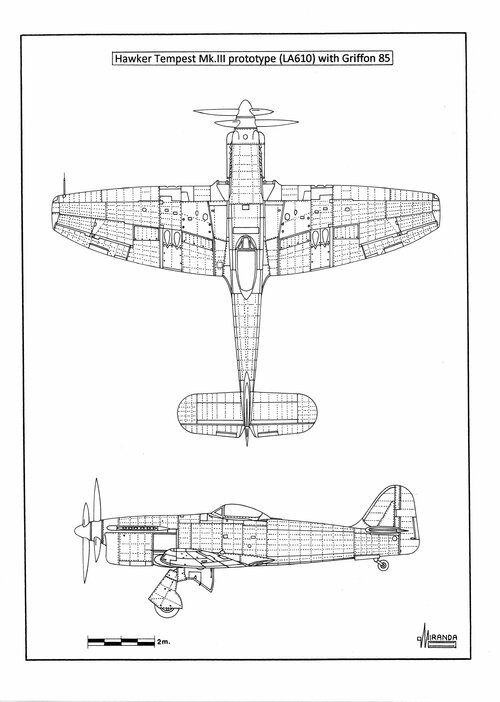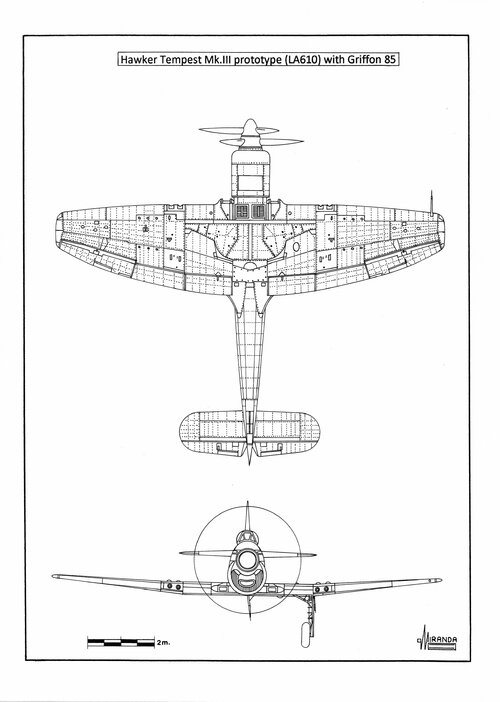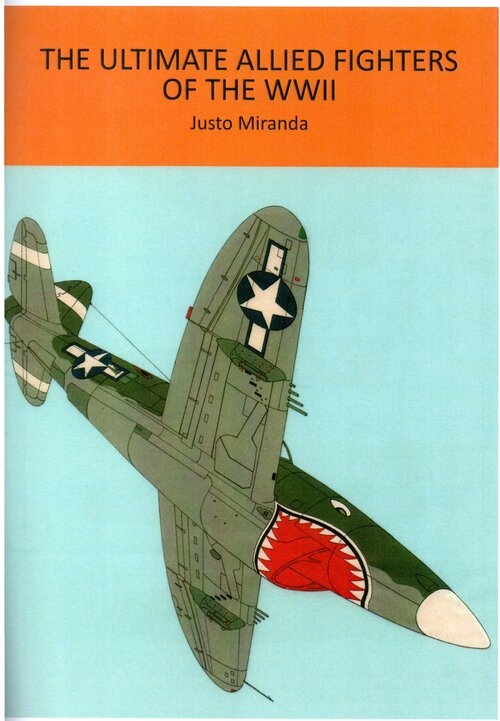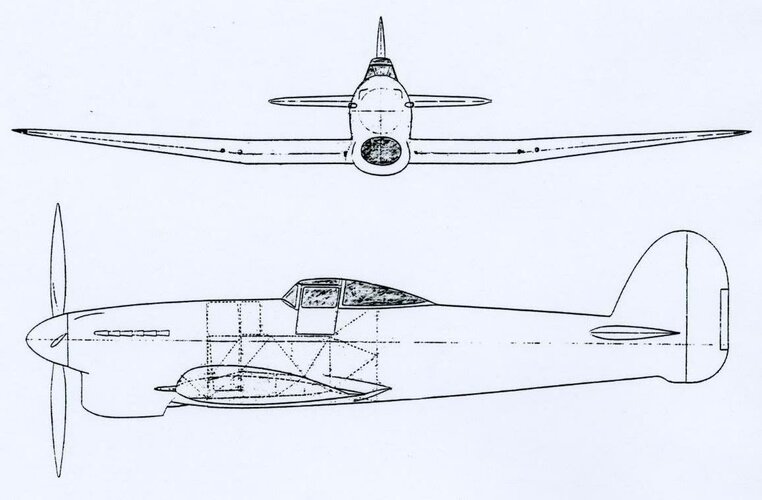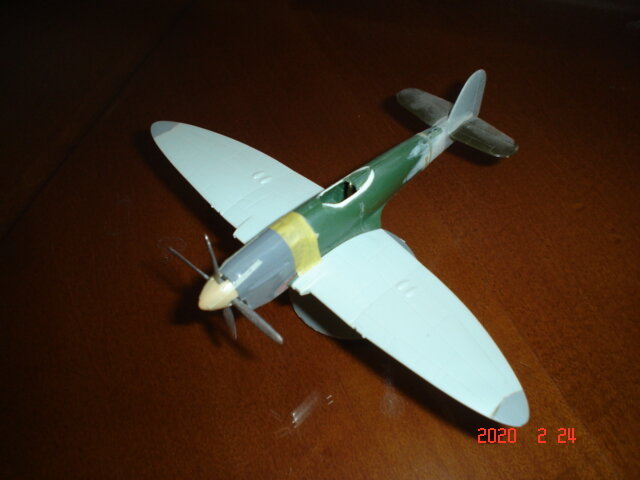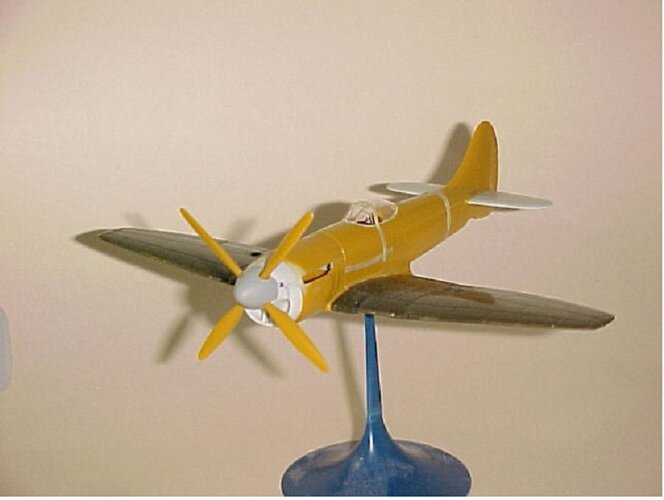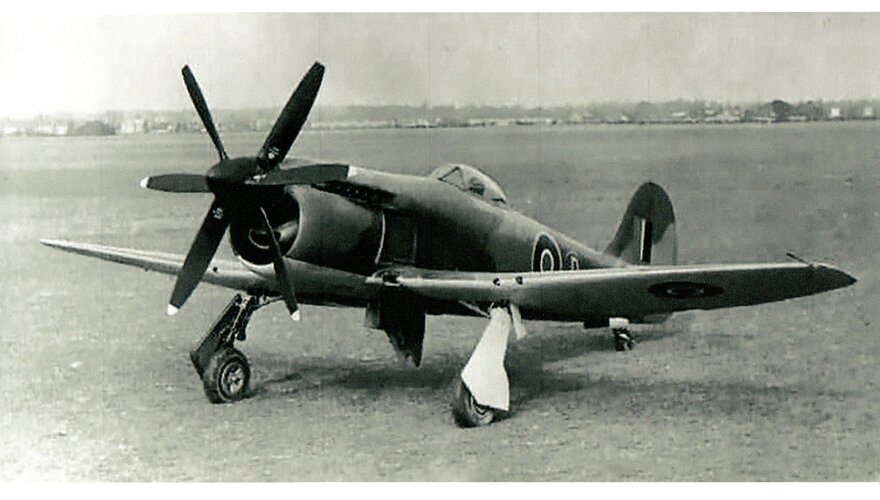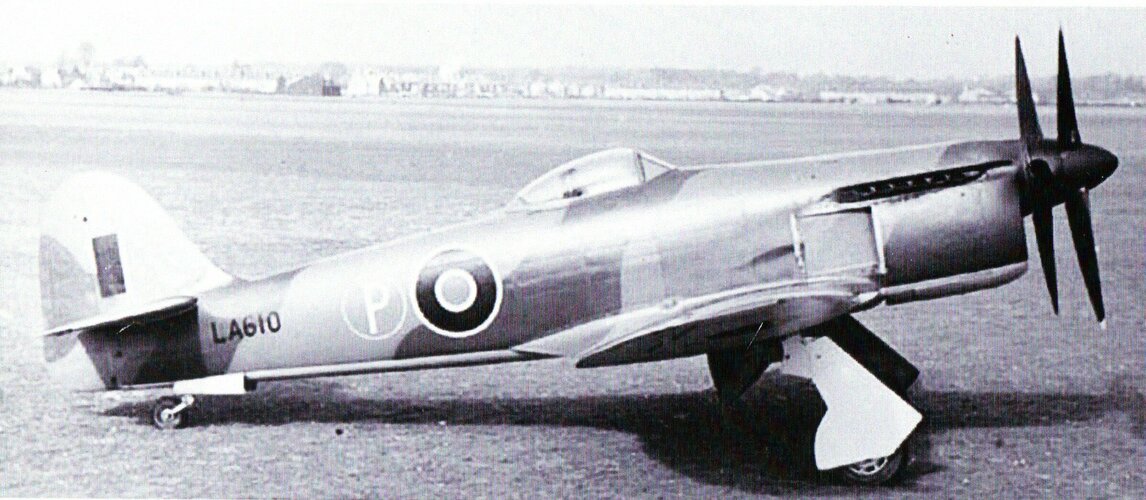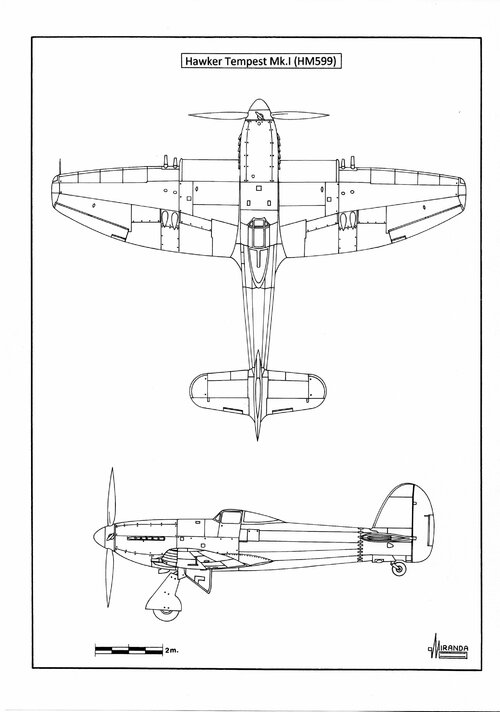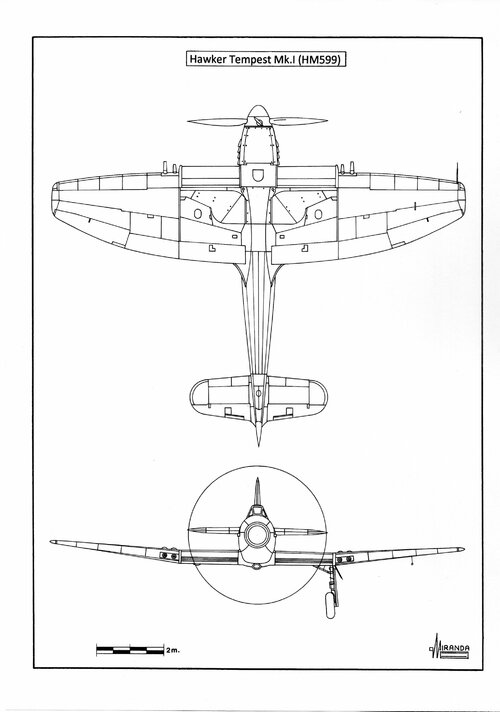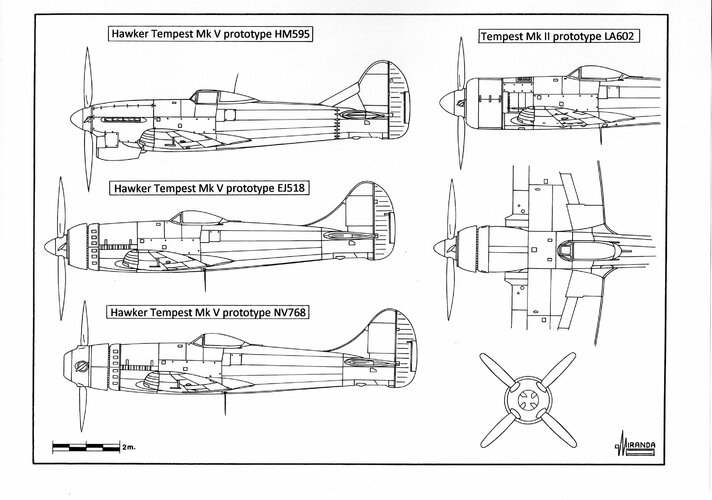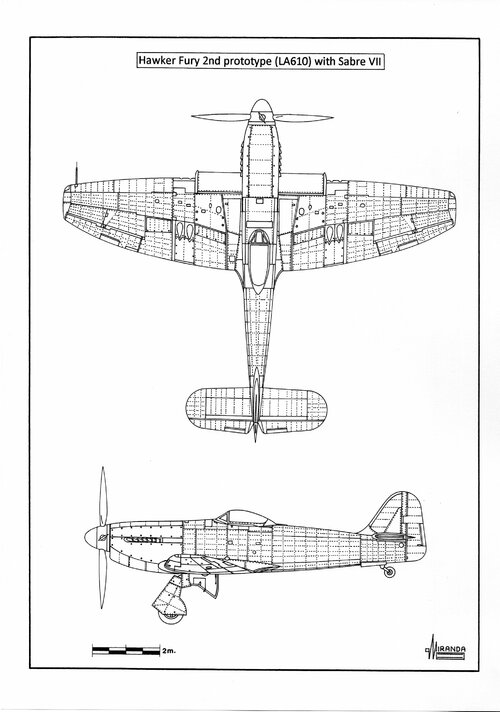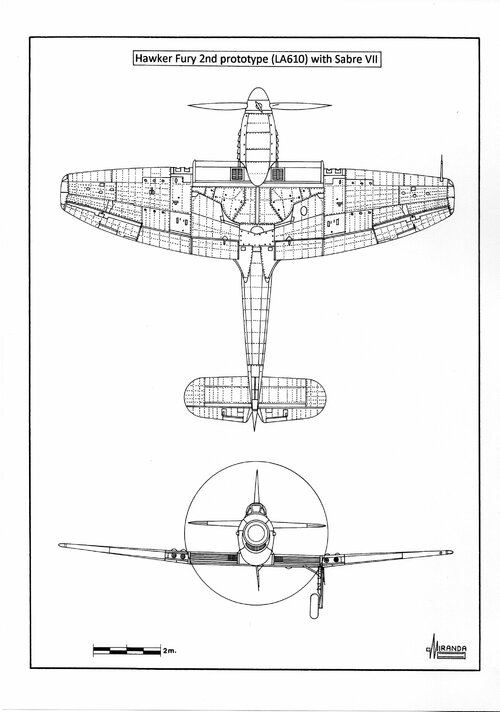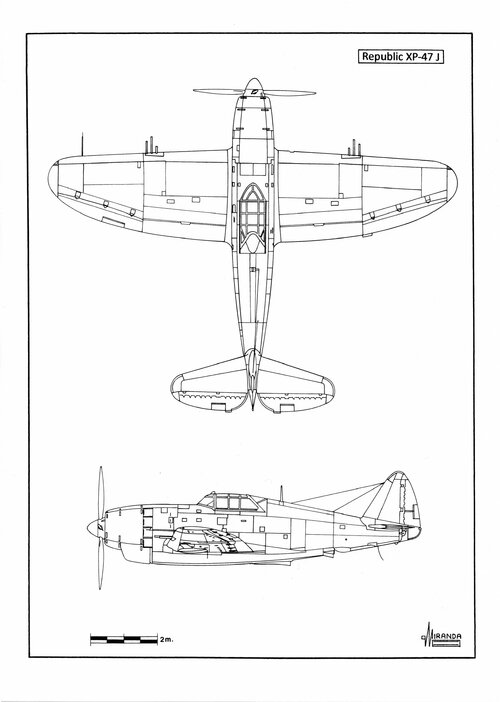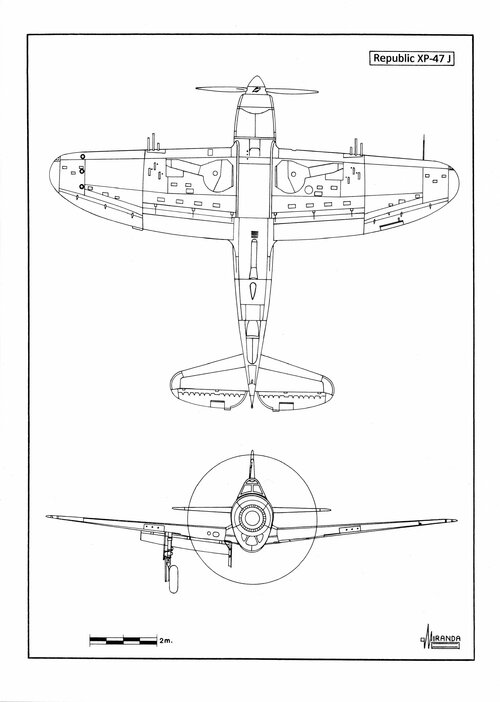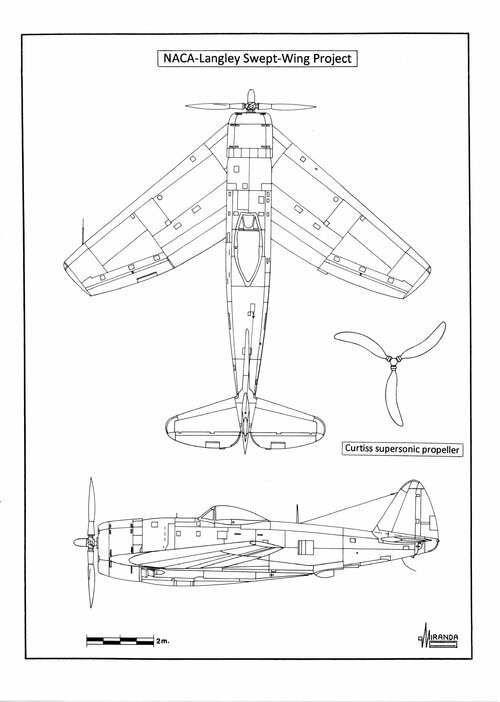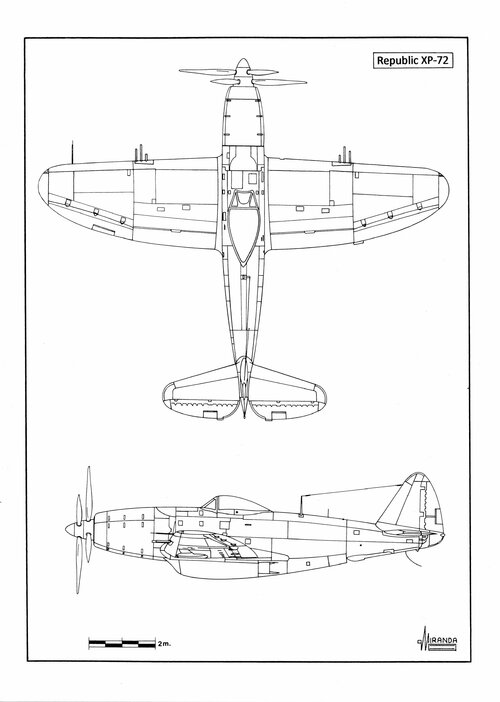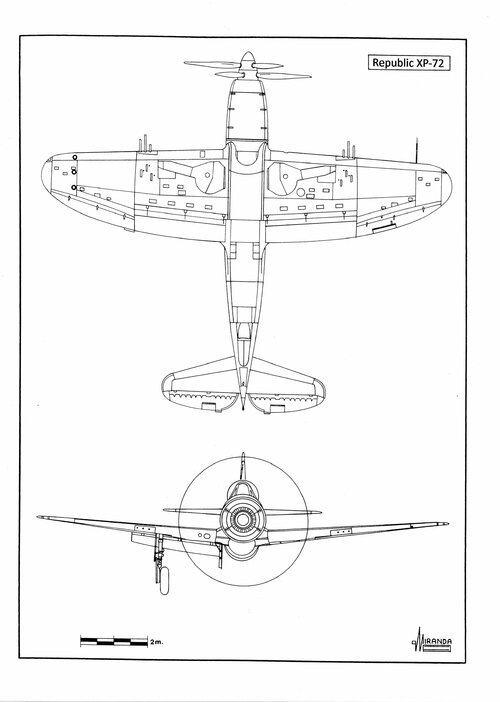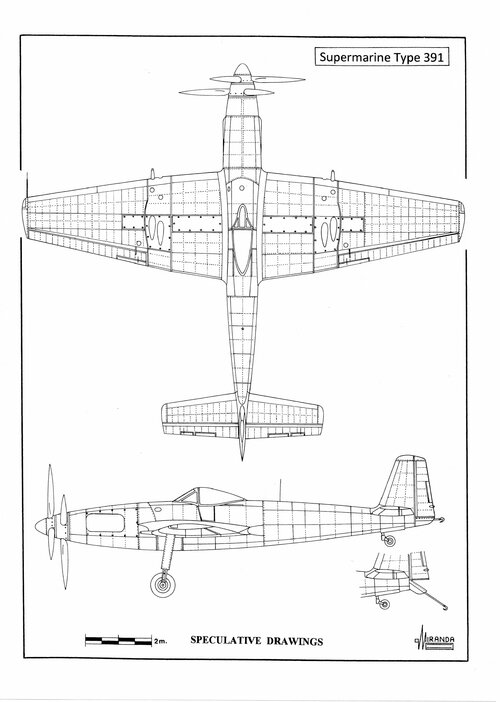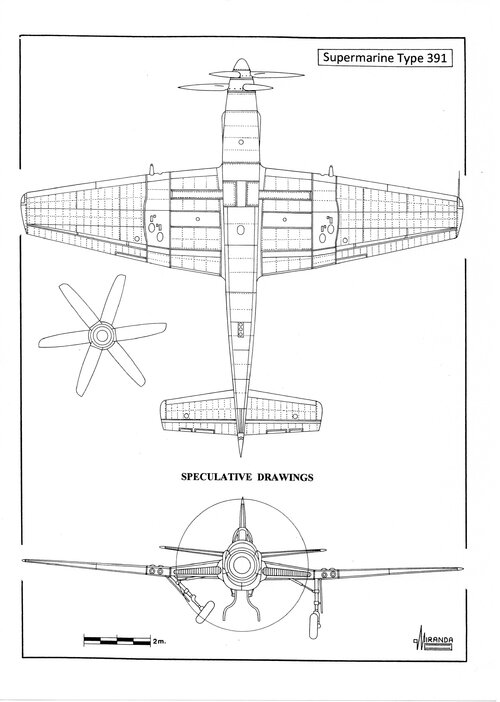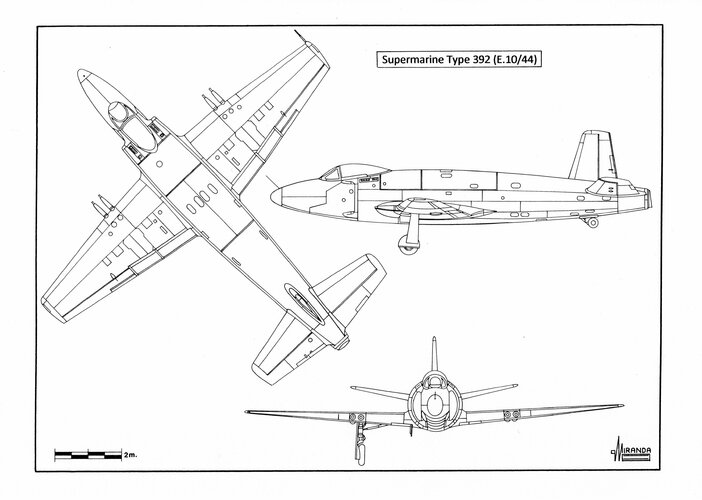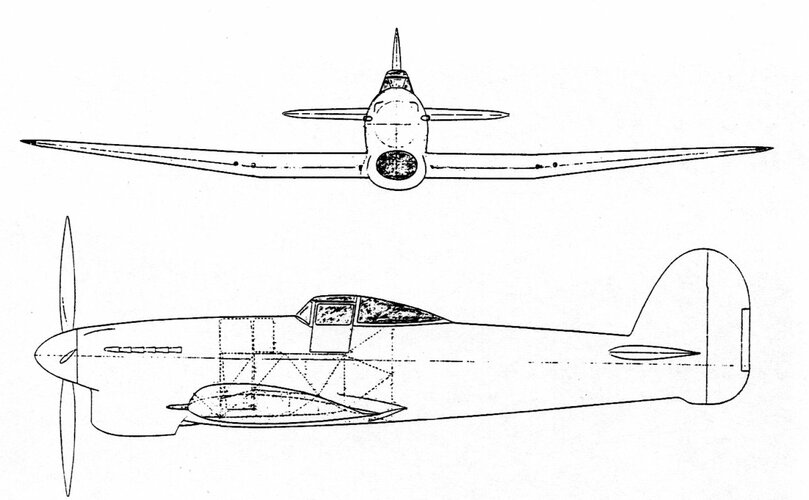You are using an out of date browser. It may not display this or other websites correctly.
You should upgrade or use an alternative browser.
You should upgrade or use an alternative browser.
Hawker Tempest III drawing wanted
- Thread starter Maveric
- Start date
when you writen this book ?
I proposed its publication to Fonthill in January, but all production has been delayed a few months and now I am negotiating the delivery date, maybe it will be available for Christmaswhen you writen this book ?
Contents
- The American Fighter
- Curtiss P-36 and P-40 evolution
- Curtiss XP-53 and XP-60 evolution
- Curtiss XP-62
- Curtiss XP-55
- Curtiss XF14C
- Republic P-47 Thunderbolt evolution
- North American P-51 Mustang evolution
- Davis Manta Fighter
- Gluhareff Dart
- Lockheed L-133 and XP-80 evolution
- NACA-Langley-Jacobs-Jeep
- Northrop Flying Wings
- Vultee XP-54, XP-68 and XP-81
- The British Fighter
- Hawker Hurricane evolution
- Supermarine Spitfire dead ends
- Hawker Tornado and Typhoon evolution
- Hawker Tempest and Fury
- Blackburn B-37 Firebrand
- Blackburn B-44
- Blackburn B-48 Firecrest
- Martin-Baker M.B.3, M.B.4 and M.B.5
- Miles M.35 and M.43
- Early British Jets
- The French Fighter
- Arsenal Projects
- Sud-Est S.E. 582
- The Soviet Fighter
- Golovin ‘IVS’/’ISF’
- Jurijev KIT-1
- Nikitin-Shevchenko IS-4
- Bibliography
Last edited:
Those drawings represent the Hawker Fury I prototype not the Tempest III. But that was not how the II & IV were initially envisaged.
As proposed by in April 1942 under the Hawker designation P.1016 they were to be powered as follows:-
Tempest III - Griffon IIB (1,720hp two speed, single stage supercharger as used in the Fairey Firefly I) with length 34'3" weight 10,400lb. Estimated to do 370mph at 9,000ft and 400mph at 22,000ft. Time to 30,000ft 17.7 min, ceiling 31,500 ft. Two prototypes planned - LA610 & LA614. Former flew in 1944 as the Hawker Fury prototype (see below) while LA614 was cancelled in Feb 1943.
Tempest IV - Griffon 61 (1,540hp two speed, two stage supercharger as used in Spitfire XIV) weight 10,700lb. Estimated speed 419mph at 19,500ft and 430mph at 31,500ft. Time to 30,000ft 13.6min. Ceiling 40,000ft. No prototypes.
Given the extra supercharger stage of the Griffon 61, the Mk.IV must have been longer (think Spitfire XII v XIV). Obviously Camm preferred the latter engine as did the Air Ministry but it was eventually decided that it was not required.
LA610 eventually flew on 27 Nov 1944 as the Griffon 85 powered Hawker F.2/43 Fury I prototype (the Tempest Light Fighter) The Griffon 85 was a Griffon 65 (itself a very slightly modified Griffon 61) with Rotol 6 blade counter rotating props. So your drawings appear to me to be of LA610 in that form and not as a proposed Tempest III or even IV.
Ref "Tempest, Hawker's Outstanding Piston Engined Fighter" by Tony Butler & "British Piston Aero Engines and Their Aircraft" by Alec Lumsden.
windswords
ACCESS: Secret
- Joined
- 19 May 2009
- Messages
- 389
- Reaction score
- 218
Hi Justo,
"Republic P-47 Thunderbolt evolution" Will you be covering both the XP-47J and the superlative XP-72?
"Supermarine Spitfire dead ends" Will you be covering the Supermarine Spiteful?
I would definitely buy your book.
Thanks
"Republic P-47 Thunderbolt evolution" Will you be covering both the XP-47J and the superlative XP-72?
"Supermarine Spitfire dead ends" Will you be covering the Supermarine Spiteful?
I would definitely buy your book.
Thanks
An answer to an enquiry I had made to Chris Thomas who was the Typhoon, Tempest & Fury Specialist at Air-Britain, was the Mk.III looked similar to a Mk.V but the radiator housing was slimmer. Sometime later I was given a bunch of 'The Aeroplane' bookazines by my Dad and in the 1948 issue there was a cutaway drawing of a Fairey Firefly Mk.I which had an interesting note. It said the Griffon installation was a 'power egg' --- I suddenly realized what the description Chris Thomas had given me, it was a power egg. Chris also told me that a drawing he had seen of the Mk.III, it had a fully eliptical wing and a Typhoon tail.
Chris also said that he had not found any drawing of the Mk.IV, but considering it was LA610 and it went on to be a Fury prototype and appeared with the annular engine housing and the short wing span, I surmised the Tempest Mk.IV might have been similar. Chris did say that the Mk.IV was the 'light weight' Tempest.
Here's a drawing of the Mk.III that Chris gave me, along with the Mk.III and Mk.IV I'm building.
Chris also said that he had not found any drawing of the Mk.IV, but considering it was LA610 and it went on to be a Fury prototype and appeared with the annular engine housing and the short wing span, I surmised the Tempest Mk.IV might have been similar. Chris did say that the Mk.IV was the 'light weight' Tempest.
Here's a drawing of the Mk.III that Chris gave me, along with the Mk.III and Mk.IV I'm building.
Attachments
Last edited:
To meet the Specification F.6/42, in February 1942 were ordered six prototypes (LA602 to LA607) of the Tempest Mk.II variant, powered by one Bristol Centaurus IV, sleeve-valve radial engine.Those drawings represent the Hawker Fury I prototype not the Tempest III. But that was not how the II & IV were initially envisaged.
As proposed by in April 1942 under the Hawker designation P.1016 they were to be powered as follows:-
Tempest III - Griffon IIB (1,720hp two speed, single stage supercharger as used in the Fairey Firefly I) with length 34'3" weight 10,400lb. Estimated to do 370mph at 9,000ft and 400mph at 22,000ft. Time to 30,000ft 17.7 min, ceiling 31,500 ft. Two prototypes planned - LA610 & LA614. Former flew in 1944 as the Hawker Fury prototype (see below) while LA614 was cancelled in Feb 1943.
Tempest IV - Griffon 61 (1,540hp two speed, two stage supercharger as used in Spitfire XIV) weight 10,700lb. Estimated speed 419mph at 19,500ft and 430mph at 31,500ft. Time to 30,000ft 13.6min. Ceiling 40,000ft. No prototypes.
Given the extra supercharger stage of the Griffon 61, the Mk.IV must have been longer (think Spitfire XII v XIV). Obviously Camm preferred the latter engine as did the Air Ministry but it was eventually decided that it was not required.
LA610 eventually flew on 27 Nov 1944 as the Griffon 85 powered Hawker F.2/43 Fury I prototype (the Tempest Light Fighter) The Griffon 85 was a Griffon 65 (itself a very slightly modified Griffon 61) with Rotol 6 blade counter rotating props. So your drawings appear to me to be of LA610 in that form and not as a proposed Tempest III or even IV.
Ref "Tempest, Hawker's Outstanding Piston Engined Fighter" by Tony Butler & "British Piston Aero Engines and Their Aircraft" by Alec Lumsden.
The LA602 was flown on 28 June 1943, with Typhoon tail surfaces, reaching a top speed of 461 mph. at 21,000 ft. but their development was delayed because engine vibration problems. The Mk.II didn't get into combat during the Second World War.
On 10 April 1942 Hawker proposed two light versions of the Tempest powered by Rolls-Royce Griffon engines, as a replacement for the Hurricane.
The prototype LA610, designated Tempest Mk.III, was flown on 27 November 1944 powered by one Griffon IIB.
The prototype LA614, designated Tempest Mk.IV with Griffon 61, was never built.
Napier spent a great deal of time experimenting with annular radiators in an effort to supersede the chin radiators of the Typhoon and Tempest.
In 1943 the Typhoon R8694 was fitted with one annular radiator which encircled the engine reduction gear and one propeller driven fan inside the air intake.
With the drag reduction obtained the prototype attained 452 mph. became the faster Typhoon of all.
Early 1946 the Tempest Mk.V (EJ518) was fitted with one 2,240 hp Sabre VI engine, with annular radiator and sliding ring cowl. Flight tests revealed a drag of 57.8 lb (against the 63.4 lb of the standard Tempest) with an improvement in the top speed of 14 m.p.h.
A second prototype (NV768) was flight tested in July 1946 with annular radiator installation and Sabre IIB engine.
In September the aircraft was fitted with one ducted spinner with the air intake ahead of the propeller blades.
In March 1943 was issued Specification F.2/43 calling for a lighter version of the Tempest, under the denomination Fury.
Hawker proposed three projects: P.1018 with Sabre VII engine, P.1019 with Griffon 61 and P.1020 with Centaurus XII.
The first prototype (NX798) was flown on 1 September 1944 powered by the Centaurus engine driving a four-bladed Rotol airscrew. The aircraft demonstrated remarkable manoeuvrability and good handling, was selected by the Admiralty for production of the Sea Fury naval fighter, under the Specification N.7/43.
The second prototype (LA610), ex-Tempest Mk.III, was flown on 27 November 1944 with the wing centre section removed, the wingspan shortened by 29 inches, new tail surfaces and raised cockpit.
The aircraft was powered by one Griffon 85 driving a six-bladed contra-rotating airscrew, but their new ‘horse collar’ radiator proving far less satisfactory than the wing root radiators.
The LA610 was re-engined with a Sabre VII reaching 483 mph. on 3 April 1946. It was the fastest piston-powered Hawker fighter, but the RAF was not interested and the Fury production was cancelled in favour of the Vampire and Meteor jet fighters.
Fury LA610 technical data
Power plant: One Rolls-Royce Griffon 85, twelve cylinder ‘V’, liquid cooled engine, rated at 2,340 hp, driving a six-bladed contra-rotating airscrew, or one Napier Sabre VII, twenty-four cylinder ‘H’, liquid-cooled engine rated at 3,055 hp, wingspan: 38.6 ft (11.77 m), length: 34.6 ft (10.54 m), height: 14.6 ft (4.5 m), wing surface: 284.5 sq. ft (25.6 sq. m), maximum weight: 12,120 lbs (4,236 kg), maximum speed: 483 m.p.h. (777 kph), climb rate: 4,706 ft/min, ceiling: 41,500 ft (12,652 m), armament: four wing-mounted 20 mm Hispano Mk.V cannons.
Attachments
Hi Justo,
"Republic P-47 Thunderbolt evolution" Will you be covering both the XP-47J and the superlative XP-72?
"Supermarine Spitfire dead ends" Will you be covering the Supermarine Spiteful?
I would definitely buy your book.
Thanks
Republic P-47 Thunderbolt evolution
On 22 November, 1942 the Alexander Kartveli team started the design of a high-performance fighter named XP-47J Superbolt.
The aircraft was powered by one 2,800 hp. Pratt & Whitney R-2800-57 radial engine, with cooling fan, methanol-water injection and turbo-supercharger driving an experimental four-bladed Curtiss propeller with 3.96 m of diameter.
The construction of two prototypes were authorised by the USAAF on 18 June, 1943 and the 43-46952 was flown on November 26, 1943.
The Superbolt, equipped with one CH-3 turbo-supercharger reached 493 mph (793 kph) on 11 July, 1944.
With one CH-5 turbo-supercharger reached 505 mph (813 kph) on 4 August, 1944, the highest speed recorded by a piston engine wartime aircraft.
The XP-47J was a completely new aircraft with only 30 per cent commonality of parts with the P-47D-20 standard. Their production would require changing the 70 per cent of production line tooling, which was unacceptable to the USAAF.
Only the construction of the first prototype was allowed and the XP-47J never bent beyond the experimental phase.
The second prototype, with bubble canopy, R-2800-61 engine and Aero Products contra-rotating propellers was cancelled, in March 1944, in favour of the XP-72.
Republic XP-47J technical data
Wingspan: 12.44 m (40 ft-10 inch), length: 10.10 m (33 ft-3 in), height: 4.31 m (14 ft-2 in), wing area: 27.87 sq. m. (300 sq. ft), max weight: 5,625 kg (12,400 lbs), max speed: 813 kph (505 mph), ceiling: 13,716 m (45,000 ft), range: 1,722 km (1,070 mls), armament: 6 x 0.50 in Browning heavy machine guns.
The search for greater speeds, to counter the threat of German V-1 missiles and jet fighters, culminated in the XP-72 Ultrabolt, a modification of the XP-47J airframe redesigned around the monster P&W R-4360 ‘Wasp Major’ engine.
The power plant, designed by Ray Higginbotham, comprised one 3,500 hp. R-4360-13, 28 cylinder, fan-forced, air cooled engine and two-stage, variable-speed, mechanical supercharger with intercooler.
The ventral air scoop was moved back and placed parallel with the wing leading edge, the air was compressed in the first stage impeller placed aft the cockpit. The variable-speed remote supercharger, with 5 feet of diameter, was engine driven through an extension shaft with fluid coupling gear.
Compressed air passed through an intercooler and delivered to the second supercharger mounted in the engine downdraft intake.
On 18 June, 1943 the USAAF signed a contract for two XP-72 prototypes.
The first aircraft 43-36598, fitted with a four-bladed Curtiss-Wright propeller, compressibility recovery flaps, strengthened landing gear and six wing mounted 0.50 in machine guns, was flown on 2 February, 1944. A maximum speed of 490 mph (789 kph) being reached in flight tests.
The second prototype 43-36599, fitted with a new Aero Products coaxial contra-rotating, six-bladed propeller, flew for the first time on 26 June, 1944.
Late 1944 the USAAF placed an order for 100 P-72 fighters. The production version with P-47N wings, was powered by one 3,650 hp. R-4360-19 engine, driving a contra-rotating six-bladed propeller and armed with four 37-mm cannon.
Early 1945 the war situation indicated the P-72 was not needed and the order was cancelled on January 4, in favour of the AP-23 jet fighter project.
Republic XP-72 technical data
Wingspan: 12.47 m (40.9 ft), length: 11.28 m (37 ft), height: 4.87 m (16 ft), estimated max speed: 811 kph (504 mph) at 7,620 m (25,000 ft), armament: 4 x 37-mm M10 cannons.
Sorry, no Spiteful but Supermarine Type 391 and Supermarine Type 392 (E.10/44)
Attachments
Sorry but your post has a problem.To meet the Specification F.6/42, in February 1942 were ordered six prototypes (LA602 to LA607) of the Tempest Mk.II variant, powered by one Bristol Centaurus IV, sleeve-valve radial engine.Those drawings represent the Hawker Fury I prototype not the Tempest III. But that was not how the II & IV were initially envisaged.
As proposed by in April 1942 under the Hawker designation P.1016 they were to be powered as follows:-
Tempest III - Griffon IIB (1,720hp two speed, single stage supercharger as used in the Fairey Firefly I) with length 34'3" weight 10,400lb. Estimated to do 370mph at 9,000ft and 400mph at 22,000ft. Time to 30,000ft 17.7 min, ceiling 31,500 ft. Two prototypes planned - LA610 & LA614. Former flew in 1944 as the Hawker Fury prototype (see below) while LA614 was cancelled in Feb 1943.
Tempest IV - Griffon 61 (1,540hp two speed, two stage supercharger as used in Spitfire XIV) weight 10,700lb. Estimated speed 419mph at 19,500ft and 430mph at 31,500ft. Time to 30,000ft 13.6min. Ceiling 40,000ft. No prototypes.
Given the extra supercharger stage of the Griffon 61, the Mk.IV must have been longer (think Spitfire XII v XIV). Obviously Camm preferred the latter engine as did the Air Ministry but it was eventually decided that it was not required.
LA610 eventually flew on 27 Nov 1944 as the Griffon 85 powered Hawker F.2/43 Fury I prototype (the Tempest Light Fighter) The Griffon 85 was a Griffon 65 (itself a very slightly modified Griffon 61) with Rotol 6 blade counter rotating props. So your drawings appear to me to be of LA610 in that form and not as a proposed Tempest III or even IV.
Ref "Tempest, Hawker's Outstanding Piston Engined Fighter" by Tony Butler & "British Piston Aero Engines and Their Aircraft" by Alec Lumsden.
The LA602 was flown on 28 June 1943, with Typhoon tail surfaces, reaching a top speed of 461 mph. at 21,000 ft. but their development was delayed because engine vibration problems. The Mk.II didn't get into combat during the Second World War.
On 10 April 1942 Hawker proposed two light versions of the Tempest powered by Rolls-Royce Griffon engines, as a replacement for the Hurricane.
The prototype LA610, designated Tempest Mk.III, was flown on 27 November 1944 powered by one Griffon IIB.
The prototype LA614, designated Tempest Mk.IV with Griffon 61, was never built.
Napier spent a great deal of time experimenting with annular radiators in an effort to supersede the chin radiators of the Typhoon and Tempest.
In 1943 the Typhoon R8694 was fitted with one annular radiator which encircled the engine reduction gear and one propeller driven fan inside the air intake.
With the drag reduction obtained the prototype attained 452 mph. became the faster Typhoon of all.
Early 1946 the Tempest Mk.V (EJ518) was fitted with one 2,240 hp Sabre VI engine, with annular radiator and sliding ring cowl. Flight tests revealed a drag of 57.8 lb (against the 63.4 lb of the standard Tempest) with an improvement in the top speed of 14 m.p.h.
A second prototype (NV768) was flight tested in July 1946 with annular radiator installation and Sabre IIB engine.
In September the aircraft was fitted with one ducted spinner with the air intake ahead of the propeller blades.
In March 1943 was issued Specification F.2/43 calling for a lighter version of the Tempest, under the denomination Fury.
Hawker proposed three projects: P.1018 with Sabre VII engine, P.1019 with Griffon 61 and P.1020 with Centaurus XII.
The first prototype (NX798) was flown on 1 September 1944 powered by the Centaurus engine driving a four-bladed Rotol airscrew. The aircraft demonstrated remarkable manoeuvrability and good handling, was selected by the Admiralty for production of the Sea Fury naval fighter, under the Specification N.7/43.
The second prototype (LA610), ex-Tempest Mk.III, was flown on 27 November 1944 with the wing centre section removed, the wingspan shortened by 29 inches, new tail surfaces and raised cockpit.
The aircraft was powered by one Griffon 85 driving a six-bladed contra-rotating airscrew, but their new ‘horse collar’ radiator proving far less satisfactory than the wing root radiators.
The LA610 was re-engined with a Sabre VII reaching 483 mph. on 3 April 1946. It was the fastest piston-powered Hawker fighter, but the RAF was not interested and the Fury production was cancelled in favour of the Vampire and Meteor jet fighters.
Fury LA610 technical data
Power plant: One Rolls-Royce Griffon 85, twelve cylinder ‘V’, liquid cooled engine, rated at 2,340 hp, driving a six-bladed contra-rotating airscrew, or one Napier Sabre VII, twenty-four cylinder ‘H’, liquid-cooled engine rated at 3,055 hp, wingspan: 38.6 ft (11.77 m), length: 34.6 ft (10.54 m), height: 14.6 ft (4.5 m), wing surface: 284.5 sq. ft (25.6 sq. m), maximum weight: 12,120 lbs (4,236 kg), maximum speed: 483 m.p.h. (777 kph), climb rate: 4,706 ft/min, ceiling: 41,500 ft (12,652 m), armament: four wing-mounted 20 mm Hispano Mk.V cannons.
Para 4 you have LA610 flying on 27 Nov 1944 with a Griffon IIB as a prototype Tempest III.
Then in para 15 you have LA610 flying on 27 Nov 1944 with a Griffon 85 as a prototype Fury I.
It simply cannot be both. AIUI the Griffon IIB option was rejected at the outset as its performance was lacking.
You're right, the first date is wrong. The Tempest III never flew in its initial configuration, there is only a drawing from April 10, 1942 of the P.1016 that represents a MkV with altered nose and Griffon 61 (Public Record Office-AVIA 15/1667). Thanks for sharing.Sorry but your post has a problem.To meet the Specification F.6/42, in February 1942 were ordered six prototypes (LA602 to LA607) of the Tempest Mk.II variant, powered by one Bristol Centaurus IV, sleeve-valve radial engine.Those drawings represent the Hawker Fury I prototype not the Tempest III. But that was not how the II & IV were initially envisaged.
As proposed by in April 1942 under the Hawker designation P.1016 they were to be powered as follows:-
Tempest III - Griffon IIB (1,720hp two speed, single stage supercharger as used in the Fairey Firefly I) with length 34'3" weight 10,400lb. Estimated to do 370mph at 9,000ft and 400mph at 22,000ft. Time to 30,000ft 17.7 min, ceiling 31,500 ft. Two prototypes planned - LA610 & LA614. Former flew in 1944 as the Hawker Fury prototype (see below) while LA614 was cancelled in Feb 1943.
Tempest IV - Griffon 61 (1,540hp two speed, two stage supercharger as used in Spitfire XIV) weight 10,700lb. Estimated speed 419mph at 19,500ft and 430mph at 31,500ft. Time to 30,000ft 13.6min. Ceiling 40,000ft. No prototypes.
Given the extra supercharger stage of the Griffon 61, the Mk.IV must have been longer (think Spitfire XII v XIV). Obviously Camm preferred the latter engine as did the Air Ministry but it was eventually decided that it was not required.
LA610 eventually flew on 27 Nov 1944 as the Griffon 85 powered Hawker F.2/43 Fury I prototype (the Tempest Light Fighter) The Griffon 85 was a Griffon 65 (itself a very slightly modified Griffon 61) with Rotol 6 blade counter rotating props. So your drawings appear to me to be of LA610 in that form and not as a proposed Tempest III or even IV.
Ref "Tempest, Hawker's Outstanding Piston Engined Fighter" by Tony Butler & "British Piston Aero Engines and Their Aircraft" by Alec Lumsden.
The LA602 was flown on 28 June 1943, with Typhoon tail surfaces, reaching a top speed of 461 mph. at 21,000 ft. but their development was delayed because engine vibration problems. The Mk.II didn't get into combat during the Second World War.
On 10 April 1942 Hawker proposed two light versions of the Tempest powered by Rolls-Royce Griffon engines, as a replacement for the Hurricane.
The prototype LA610, designated Tempest Mk.III, was flown on 27 November 1944 powered by one Griffon IIB.
The prototype LA614, designated Tempest Mk.IV with Griffon 61, was never built.
Napier spent a great deal of time experimenting with annular radiators in an effort to supersede the chin radiators of the Typhoon and Tempest.
In 1943 the Typhoon R8694 was fitted with one annular radiator which encircled the engine reduction gear and one propeller driven fan inside the air intake.
With the drag reduction obtained the prototype attained 452 mph. became the faster Typhoon of all.
Early 1946 the Tempest Mk.V (EJ518) was fitted with one 2,240 hp Sabre VI engine, with annular radiator and sliding ring cowl. Flight tests revealed a drag of 57.8 lb (against the 63.4 lb of the standard Tempest) with an improvement in the top speed of 14 m.p.h.
A second prototype (NV768) was flight tested in July 1946 with annular radiator installation and Sabre IIB engine.
In September the aircraft was fitted with one ducted spinner with the air intake ahead of the propeller blades.
In March 1943 was issued Specification F.2/43 calling for a lighter version of the Tempest, under the denomination Fury.
Hawker proposed three projects: P.1018 with Sabre VII engine, P.1019 with Griffon 61 and P.1020 with Centaurus XII.
The first prototype (NX798) was flown on 1 September 1944 powered by the Centaurus engine driving a four-bladed Rotol airscrew. The aircraft demonstrated remarkable manoeuvrability and good handling, was selected by the Admiralty for production of the Sea Fury naval fighter, under the Specification N.7/43.
The second prototype (LA610), ex-Tempest Mk.III, was flown on 27 November 1944 with the wing centre section removed, the wingspan shortened by 29 inches, new tail surfaces and raised cockpit.
The aircraft was powered by one Griffon 85 driving a six-bladed contra-rotating airscrew, but their new ‘horse collar’ radiator proving far less satisfactory than the wing root radiators.
The LA610 was re-engined with a Sabre VII reaching 483 mph. on 3 April 1946. It was the fastest piston-powered Hawker fighter, but the RAF was not interested and the Fury production was cancelled in favour of the Vampire and Meteor jet fighters.
Fury LA610 technical data
Power plant: One Rolls-Royce Griffon 85, twelve cylinder ‘V’, liquid cooled engine, rated at 2,340 hp, driving a six-bladed contra-rotating airscrew, or one Napier Sabre VII, twenty-four cylinder ‘H’, liquid-cooled engine rated at 3,055 hp, wingspan: 38.6 ft (11.77 m), length: 34.6 ft (10.54 m), height: 14.6 ft (4.5 m), wing surface: 284.5 sq. ft (25.6 sq. m), maximum weight: 12,120 lbs (4,236 kg), maximum speed: 483 m.p.h. (777 kph), climb rate: 4,706 ft/min, ceiling: 41,500 ft (12,652 m), armament: four wing-mounted 20 mm Hispano Mk.V cannons.
Para 4 you have LA610 flying on 27 Nov 1944 with a Griffon IIB as a prototype Tempest III.
Then in para 15 you have LA610 flying on 27 Nov 1944 with a Griffon 85 as a prototype Fury I.
It simply cannot be both. AIUI the Griffon IIB option was rejected at the outset as its performance was lacking.
Attachments
Similar threads
-
-
Hawker Tempest Prototypes & Projects
- Started by JFC Fuller
- Replies: 10
-
Pegna and Piaggio - Italian floatplane / seaplane projects - Schneider Trophy
- Started by Maveric
- Replies: 32
-
Geoffrey Hill/Westland-Hill "Pterodactyl" Designs and Prototypes
- Started by Retrofit
- Replies: 49
-

